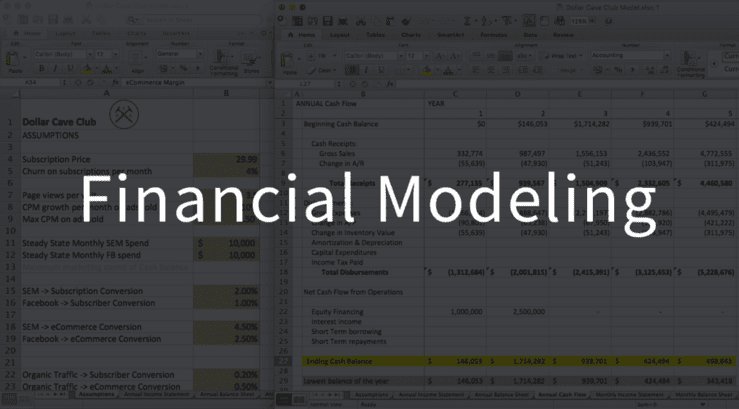You’ll need a killer startup pitch deck to raise money to launch and grow your startup business idea. To help you get there, we’ve compiled a list of common pitch deck mistakes startup entrepreneurs make. The best practices have been highlighted within these ten common mistakes to avoid- guiding you to a successful pitch deck for your business model.
1. Too Many Slides
The shorter the pitch deck, the better it is. How many slides? The golden rule is up to 20 slides.
The co-founder of PayPal, Peter Thiel, created a pitch deck template for entrepreneurs in 2012. Thiel’s pitch deck began a 10/20/30 rule- which classifies a competitive pitch deck as having ten slides, is no longer than 20 minutes, and only includes up to 30 points.

Investors consider longer pitch decks unprofessional as they usually have dozens or even hundreds of pitch decks to review each month.
As much as you’re tempted to say a thousand things- it’s crucial to summarize your business model and make it short and sweet.
2. Too Many Words (See Previous Point)
Having too many slides is just as bad as having too many words when pitching. Therefore, wordy slides and small font sizes (below Arial 12) must be avoided at all costs.
It’s one of the most common pitch deck mistakes, limiting the number of slides (see the previous point) but cramming too much information.
Writing paragraphs should also be avoided. Instead, it’s critical to convey a strong message by sticking to bullet points instead. The company’s perfect pitch deck is as visual as possible and includes pictures, tables, and charts.
3. Poor Layout & Design
Another common error founders make choosing the worst design and layout for their presentation. The layout and design of a pitch deck can make or break it because first impressions matter.
Most investors review about ten pitch decks daily. What impression would an investor get if your pitch deck is poorly designed among the other nine presentations?
When it comes to layout and design, many things need to be considered for a clear structure, including:
• Margins
• Font Size
• Color Palette
• Images
• Consistency- use 2 to 3 font sizes at most, use the same margins and the same colors

If you’re designing your pitch deck in PowerPoint, make sure to choose a sleek and clean pitch deck template. When sharing your pitch deck, it’s critical to send it as a PDF rather than an editable PowerPoint file to prevent the layout from changing.
4. Lack of Storytelling
The perfect pitch deck uses storytelling to leave a lasting impression on the investor. Investors remember people and faces more than they remember a business and product. Therefore, telling a story through your presentation makes a difference- your presentation will be memorable and interesting.
Your startup pitch deck will effectively elevate when you tell an investor a story. Storytelling is best explained as the why of your startup, and it can take multiple forms, including:
• The Journey. Where do you come from? Why did you decide to launch your startup? What motivates you?
• Customer’s Point of View. Your market, product highlights, the value you offer, and your advantage over your competition.
• Industry’s Point of View. Your startup’s role and how well you know your market and industry trends.
5. No Traction & Validation
Traction and validation are important parts of a presentation. If you have a pre-revenue startup, reflect your estimated figures from your business plan. If your business is already generating revenue, show your figures and growth. This basic financial data is essential for investors to assess the potential of your business.

Traction and validation reassure an investor that they’re not just investing in a great idea but in a great business.
6. No Clear Financial Projections & Financial Model
One of the most common mistakes founders make with their presentation is having no clear financial projections and financial model. Often, founders forget or even avoid including projected growth in their investor pitch deck.
When presenting your pitch to investors, have a well-thought-out financial plan to present as well.

The financial projection needs to be aggressive but reasonable. For instance, if your pitch shows projections for $5 million in revenue in the next five years- investors will show little interest. On the other hand, if your pitch deck shows projections for $500 million in revenue in just three years- it will be considered unrealistic. Therefore, when working on your financial projection, make sure you can back up your numbers with solid assumptions.
7. Not Including a Funding Ask
One of the biggest pitch deck mistakes to avoid is not including funding ask in your deck. This point may seem obvious, and as surprising as it is, it often happens, and no funding request is showing up in the presentation.
A funding request isn’t just a number; there are other aspects as well:
• Percentage of Equity
• Where The Money Will Be Spent
• Expected Runway
• Type of Instrument
• Minimum Ticket Value
8. Claiming A Lack of Competitors
Claiming a lack of competition in your pitch leads investors to believe that you have no market. Investors want to see healthy competition- this guarantees that your startup is in a robust market.
Also, providing an in-depth competitive analysis shows that the founders understand what will be required to succeed in the industry.

In most cases, other competitors will try to solve the same problem you are targeting directly or indirectly. When other early-stage startups are pursuing the same opportunity, an investor will see your business as being a valuable one.
9. Making Use of Jargons or Acronyms
Your pitch presentation is meant for investors who might not be fully knowledgeable of your industry, let alone the product or service you offer.
The best startup pitch decks are as clear as possible, meaning little to no jargon or acronyms- in most cases, they’re unnecessary and confusing, which is a turn-off.
If your investors are experts in your field, jargon or acronyms could help show that you know your startup’s field inside and out. In that case, including some jargon and acronyms could be potentially beneficial. If you think a specific term can be helpful, footnote the definition.
10. Not Displaying Your Contact Info
Investors expect to find contact information in your investor deck. It may seem like a no-brainer, yet entrepreneurs sometimes overlook it. Leaving it out is one of the worst mistakes you can make. An investor may be excited about your presentation, but with key information missing- they’ll simply move on to the next presentation if there’s no way to contact you.

Elevate Your Pitch, Accelerate Your Growth
Struggling to craft a compelling pitch deck? Let Outlier Venture Lab help you refine your presentation and secure the funding you need.
Our Services Include:
- Pitch Deck Perfection: Create a visually stunning and persuasive pitch deck that resonates with investors.
- Financial Model Mastery: Develop robust financial models to showcase your business’s potential.
- Expert Guidance: Receive personalized feedback and mentorship from seasoned entrepreneurs and industry experts.
Ready to take your startup to the next level?
CONTACT US TODAY


